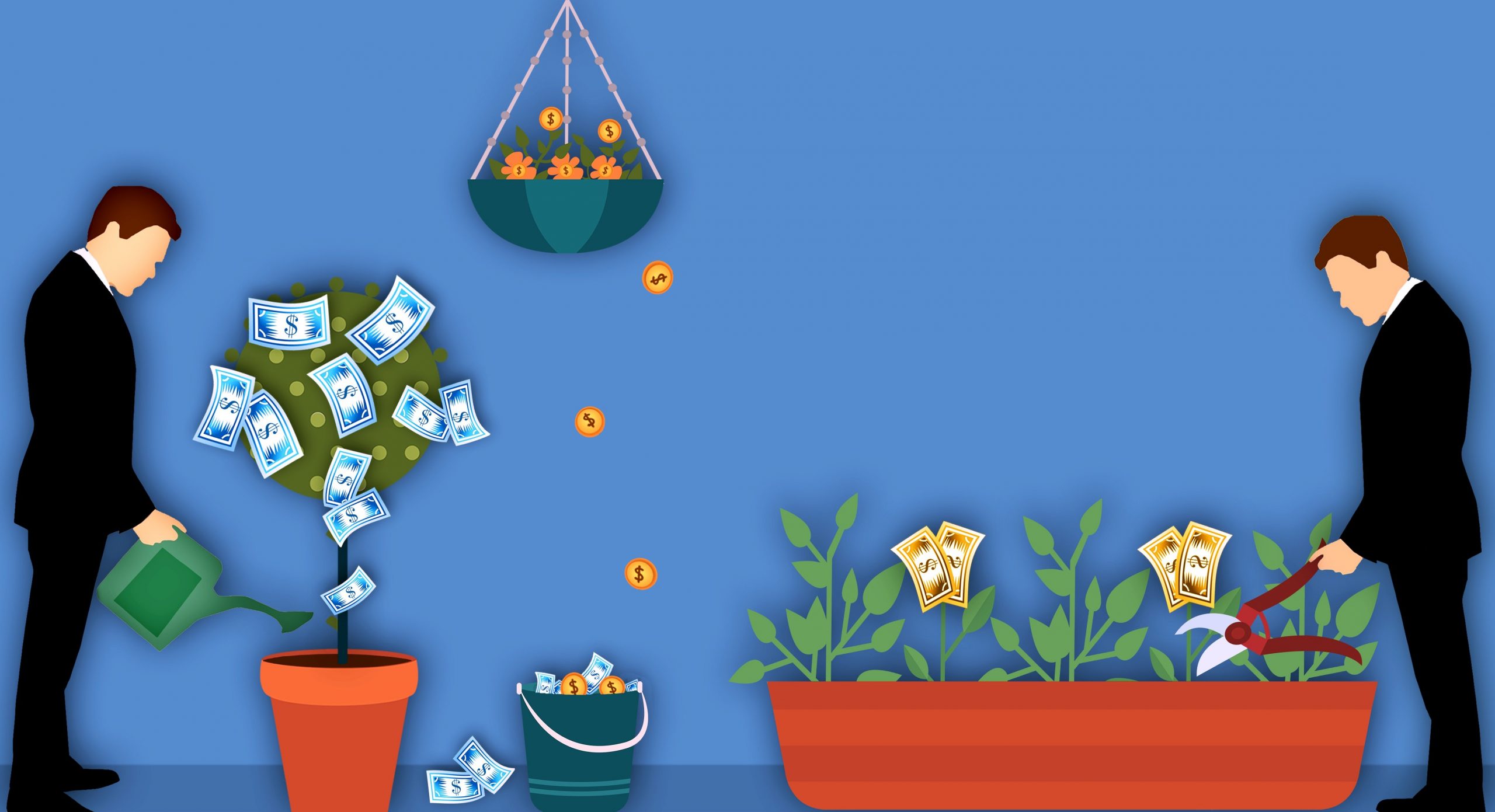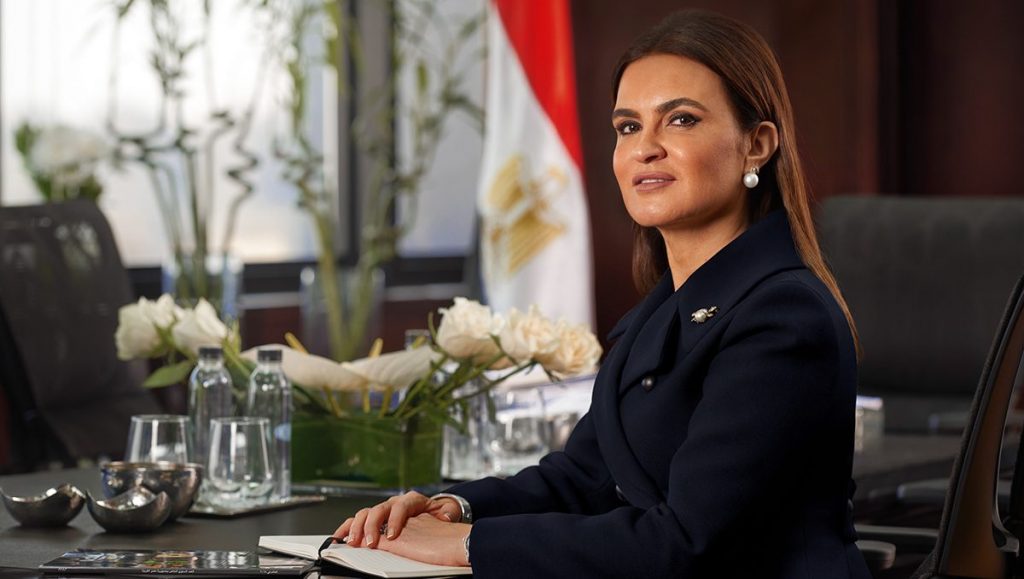The government and CIB have launched Egypt’s first specialized bonds to finance environmentally friendly projects. That is in line with Egypt Vision 2030, the priorities of many international businesses. However, will local private companies invest to become eco-friendly while also shaking off the cobwebs of the pandemic and dealing with obstacles the state has yet to tackle?
The 2016 Paris Agreement and U.N.’s 17 Sustainable Development Goals (SDGs) in 2015 painted a gloomy picture of the world if governments and companies don’t consider their environmental impact as seriously as they do their financial returns. COVID-19 raised alarms with experts who note that continued environmental deterioration could cause more pandemics and an irreversible ecological crisis.
Kristalina Georgieva, IMF managing director, noted in April that with governments expediting vaccination efforts, economic recovery is already under way. However, those recoveries must be geared toward environmental protection. “Now the outlook is starting to become sunnier … The IMF recently lifted its global growth forecast to 6% for this year and 4.4% in 2022,” she said in April on the IMF website. “If we are to achieve a more sustainable and inclusive recovery, we must turn this crisis into opportunity by building greener and more climate-resilient economies.”
 The government has been taking notice, announcing that the environment is one of the pillars in the Egypt Vision 2030 strategy. Meanwhile, over the past two years, Egypt was the first in MENA to launch specialized sovereign bonds for environmental projects (Green bonds). In June, CIB became the first private sector bank in the region to introduce such a tool. “Those issuances are a milestone for Egypt’s capital markets and the country’s strategy to become a ‘green economy’ to create a sustainable economy,” said the Egyptian Financial Regulatory Authority (FRA) press release in July.
The government has been taking notice, announcing that the environment is one of the pillars in the Egypt Vision 2030 strategy. Meanwhile, over the past two years, Egypt was the first in MENA to launch specialized sovereign bonds for environmental projects (Green bonds). In June, CIB became the first private sector bank in the region to introduce such a tool. “Those issuances are a milestone for Egypt’s capital markets and the country’s strategy to become a ‘green economy’ to create a sustainable economy,” said the Egyptian Financial Regulatory Authority (FRA) press release in July.
However, a World Bank report in December painted a worrying picture of Egypt’s private sector’s prospects. “The strengthened macroeconomic fundamentals have restored confidence in the economy,” said the World Bank’s Country Private Sector Diagnostic report for Egypt. “But reforms have yet to trigger a marked and sustained increase in non-extractive private investments.”
That raises the question of whether most local companies can afford to make their operations eco-friendly, thereby demanding green financing over solidifying their existing operations via conventional funding. “Sustainable finance cannot remain a niche; it should be mainstreamed in order to build resilience in the system,” noted the OECD’s Global Outlook on Financing for Sustainable Development 2021 report.
Special tools
In essence, green financing tools are conventional funding instruments from banks and international financing institutions directed solely to eco-friendly projects. Accordingly, the financiers audit the project to ensure its “green” credentials. “It is used to ensure a better environmental outcome,” said Sean Fleming, a senior writer at Formative Content, to the World Economic Forum in November. In return, such financing is less costly than conventional funding tools, as financing green projects is a priority for governments and international financial institutions, such as the World Bank and IMF.
Green financing tools could include loans, debt instruments with unique arrangements such as Sukuk, and investment deals such as those signed with international financing institutions. The most common is the “green bond,” said Flemming. “There is a code of conduct [document] that defines what constitutes a green bond.”
The U.S. is leading green investments with such tools, noted Flemming, used in renewable energy and energy efficiency, pollution prevention and control, and biodiversity conservation projects.
China and France rank second and third in green financing. Meanwhile, the European Central Bank holds 20% of all euro-denominated green debt, according to a Reuters analysis by specialist markets correspondent Marc Jones in October. That is a fast pace considering they started buying them in 2016, said Fleming.
Other central banks are announcing similar strategies, especially in Europe. “The Swedish Riksbank has begun divesting fossil-based holdings, selling bonds from some Australian and Canadian provinces,” said Fleming. Deputy Governor Martin Flodén posted on Riksbank’s website: “The Riksbank needs to analyze and manage the economic consequences of climate change. We can contribute to the climate work to some extent by giving consideration to sustainability aspects when investing.”
Not enough money
 Since the announcements of the SDGs and Paris Agreement targets, financing the shift to a green economy has lagged. John Colas, vice chairman for financial services in the Americas in the management consulting firm Oliver Wyman, estimated the global financing gap ranged from $2.5 trillion to $4.8 trillion before the pandemic.
Since the announcements of the SDGs and Paris Agreement targets, financing the shift to a green economy has lagged. John Colas, vice chairman for financial services in the Americas in the management consulting firm Oliver Wyman, estimated the global financing gap ranged from $2.5 trillion to $4.8 trillion before the pandemic.
That funding shortage became even more pronounced since the pandemic. The IMF estimated that COVID-19 increased the gap by $1 trillion. An OECD report noted the deficit is more evident in developing nations, saying the gap increased by $1.7 trillion last year, a 70% jump from the year before.
Emerging economies have limited resources to lock down their economies fully and rapidly vaccinate their populations to overcome COVID-19. “Financing for the sustainable development of developing countries risks collapsing, with all resources available under stress, domestic and external, public and private,” noted the OECD’s Global Outlook on Financing for Sustainable Development 2021 report.
Yet, even developed governments with significantly more resources don’t sufficiently recognize the need to incentivize green financing. Inger Anderson, executive director of the U.N. Environment Programme (UNEP), said that of the $14 trillion committed by states to recover from COVID-19, “only 20%” is directed to green investments.
Additionally, not all eco-friendly projects are getting equal attention from green investors and funds, said Kumi Kitamori, head of Green Growth & Global Relations Division at the OECD, to the International Institute for Sustainable Development in June. “Funds have supported energy and surface transport sectors, while maritime and aviation lag behind.”
Kitamori also said that even within favored eco-friendly investments, most of the money goes to research and development, not capacity building and training workers. That hampers implementation, as few people are qualified to be employed in newly developed technologies.
Such imbalances come despite the U.N. secretary-general establishing the Global Investment for Sustainable Development Alliance with the goal of removing the “perception of risk in many developing countries [that] impedes sustainable development opportunities,” said the OECD report.
The other problem hampering green investments is outdated incentives and policies designed to attract funds, the OECD report said. “Domestic and international SDG financing strategies need to be better connected. Unless the incentives within … countries are corrected, resources will not flow to where the needs are greatest.”
Egypt’s green funding
The government’s strategy to make Egypt’s economy eco-friendly entered the limelight in September. Finance Minister Mohamed Maait announced the government is preparing to introduce MENA’s first sovereign green bonds. “The sovereign green bond program will help us raise capital from investors who care for both environmental and financial returns,” he said, as Al Ahram reported at the time . “The issuance of international government green bonds in global markets will enhance the environmental rating of Egypt in addition to increasing the confidence of foreign investors in the Egyptian economy and supporting its current and future growth levels.”
The five-year bond, which the government listed on the London Stock Exchange, was for $750 million, oversubscribed nearly fivefold. “Investors are eager for long-term debt instruments with good credit quality and high yields, supporting Egypt’s sustainable economic development,” Walid Labadi, Egypt country manager at the IFC, told Enterprise in March. “We believe green bonds address these demands.”
The government will use those proceeds to upgrade the country’s infrastructure for “greater energy efficiency and resource conservation,” said Maait. He noted that Egypt’s green projects portfolio is $1.9 billion. Of that, nearly 16% is for renewable energy, 19% for clean transportation, 26% for sustainable water and wastewater management, and 39% for general pollution prevention.
The second green bond issuance was from CIB, announced in June. The bank sold $100 million in noncallable five-year, fixed-rate bonds. The IFC bought the entire issuance, which surpassed earlier expectations that it would be $65 million, according to Heba Abdellatif, the bank’s head of debt capital markets, speaking to Enterprise in July 2020.
According to CIB release, 80% of the proceeds will be used to extend “green loans” to corporate clients, including SMEs. Meanwhile, the remainder would finance the bank’s plans to make its premises eco-friendly.
Looking ahead, Maait said the government would be looking into a second sovereign green bond issuance in fiscal year 2021/2022, similar in value to the first. But “the matter is not settled yet,” he told the media in June.
Meanwhile, the Financial Regulatory Authority (FRA) has yet to indicate a second private-sector green bond issuance despite announcing a 50% discount on issuance fees in November 2019.
Mass local demand?
Green financing is essential to achieve the Egypt Vision 2030 targets set in 2015, aiming to improve Egypt’s environmental ranking from 137 to 100 in 2020 and to 30 by 2030. Key performance indicators focus on improving water usage, diversifying its sources, managing waste in an eco-friendly manner, reducing ozone depletion, and reducing greenhouse emissions.
Accordingly, having sufficient green financing options would prove vital as the government has 13 environmental programs planned from 2015 to 2030. They include upgrading Egypt’s infrastructure to better manage pollution and finite natural resources, improving the efficiency of solid waste management systems, and developing a strategy to dispose of hazardous materials, among others.
However, a World Bank report published in December on Egypt’s private sector cast doubts over local firms’ willingness to invest in improving their eco-friendly credentials before handling crippling incumbent problems. “For instance, waste in agricultural products caused by inadequate transport facilities, insufficient bonded warehousing capacity, and weak cold-chain infrastructure is estimated at 15% to 20% for nonperishable crops and 25% to 50% for perishable crops,” said the report.
Meanwhile, firms willing to invest in becoming eco-friendly will likely face problems importing “green” machinery necessary for their transition and finding a market for those products. “Trade policy also creates challenges … with high and sometimes unpredictable import tariffs on food products, manufacturing inputs, and instances of export duties and bans,” the report added.
The automotive sector, for example, has enormous potential to sell and build eco-friendly vehicles in Egypt. Yet, it doesn’t. For one, the government exempts dealerships importing cars from Europe, Turkey, and Morocco from customs while local assemblers pay to import parts. There also are no incentives to export automobiles, let alone to developed markets where demand for “green” vehicles is rising.
Meanwhile, despite the state announcing a strategy to increase electric vehicles on the road and building the necessary infrastructure, there are no explicit incentives for assemblers. As a result, assemblers have yet to announce any plans to build electric vehicles. Currently, only the state-owned El Nasr Automotive Manufacturing Co. plans to sell locally assembled electric passenger cars in 2022.
The World Bank report cites similar challenges in Egypt’s maritime, chemicals, textile and agribusiness sectors.
Making matters worse for Egypt’s green investment prospects is that inbound FDI, despite being the highest in Africa, has been declining since 2000, according to the World Bank report. Additionally, nearly 74% of those new investments go to the petroleum sector. That translates to insufficient money for the country to fuel a transition to a less-polluting economy, let alone a “green economy.”
Additionally, local companies may delay their transition to eco-friendly operations further as they face new problems. “The pandemic [is having] large economic consequences for firms, given the combined shock of falling demand, reduced input supply, and increasing macroeconomic uncertainty [across the world],” said the World Bank report.
Building the eco-nomy
 In addition to resolving incumbent problems hampering local private sector investors, the government should better integrate its mechanisms and systems with the global green financing landscape. In November, the World Trade Organization (WTO) announced it is negotiating a framework with 106 countries to promote sustainable trade.
In addition to resolving incumbent problems hampering local private sector investors, the government should better integrate its mechanisms and systems with the global green financing landscape. In November, the World Trade Organization (WTO) announced it is negotiating a framework with 106 countries to promote sustainable trade.
That framework would include creating a global database with sustainability dimensions. “Foreign firms are much more likely to invest in an economy if they know there are qualified domestic firms that can supply them with the inputs needed to operate successfully, from legal services to catering services, sheet metal to trucks,” wrote Matthew Stephenson, policy and community lead at the World Economic Forum (WEF), in November.
That tool can incentivize private sector firms to take the lead in investing in green technology, creating a “sustainable investment circle,” wrote Stephenson. Currently, the WTO is working with Cambodia on that database.
The other approach to stimulating green investments and financing is for governments to “adopt the ‘silent yes’ mechanism,” noted Stephenson. Under it, the state would automatically approve eco-friendly project submissions after a specific time has elapsed after filing the request.
The WTO framework also proposes creating a “recognized sustainable investor” designation. Currently, Cambodia and Ghana have those designations for more favorable financing and investment terms and conditions, said Stephenson.
Lastly, the WTO proposes classifying “green investments” based on their risk levels to create tiered approval mechanisms and an “investor alert” system to catch complaints before they become legal disputes.
In Asia, China has created a breakout division of its Belt and Road Initiative to finance green projects in participating nations. It is called the Belt and Road Initiative International Green Development Coalition (BRIGC). It aims to allocate the correct type of financing to infrastructure projects based on their eco-credentials. It’s a “traffic light” system, said Lan Yan, BRIGC’s secretariat, where each classification gets more accessible green funding.
Also, the OECD Clean Energy Finance & Investment Mobilization offers emerging markets support in “the development of policies and instruments to help scale up a pipeline of bankable clean energy projects,” said the project’s blurb. So far, it has helped finance eco-friendly projects in Colombia, India, Vietnam, Indonesia and Thailand.
Fake green financing
The OECD’s Global Outlook on Financing for Sustainable Development 2021 report noted several risks associated with green financing under the current global guise. The first is that governments need to develop the entire eco-friendly funding landscape, including regulations and oversight, in addition to introducing green financing options. “Without better accountability, transparency and incentives, impediments remain to improving the allocation of resources,” said the OECD report.
The other important issue that governments need to tackle is sustainability labeling or branding in the absence of reliable assessment of how financing impacts progress toward global goals, noted the OECD report.
That is known as “SDG washing,” where projects labeled as environmentally friendly don’t contribute to building resilience or sustainability in the economy. “A simple test to see if many of these references are simply a case of ‘SDG washing’ is to see if there is any mention of the 169 underlying SDG targets – the granular opportunities backed by research – or the 231 unique key performance indicators used to guide measurement of whether the better outcome has been delivered,” said Andrew Parry, head of sustainable investment at Newton Investment Management, in a blog in Investment Magazine.
Finally, the OECD report stressed that the shift to a green economy will require strong government regulation and oversight that evolves with the private sector: “Without clear rules, the sustainable finance market will continue to lack integrity and efficiency, and allow investors to be misled by deceitful practices. Without transparency and harmonization of definitions and standards, the growing number of public and private initiatives could lead to further fragmentation and segmentation of markets.”







